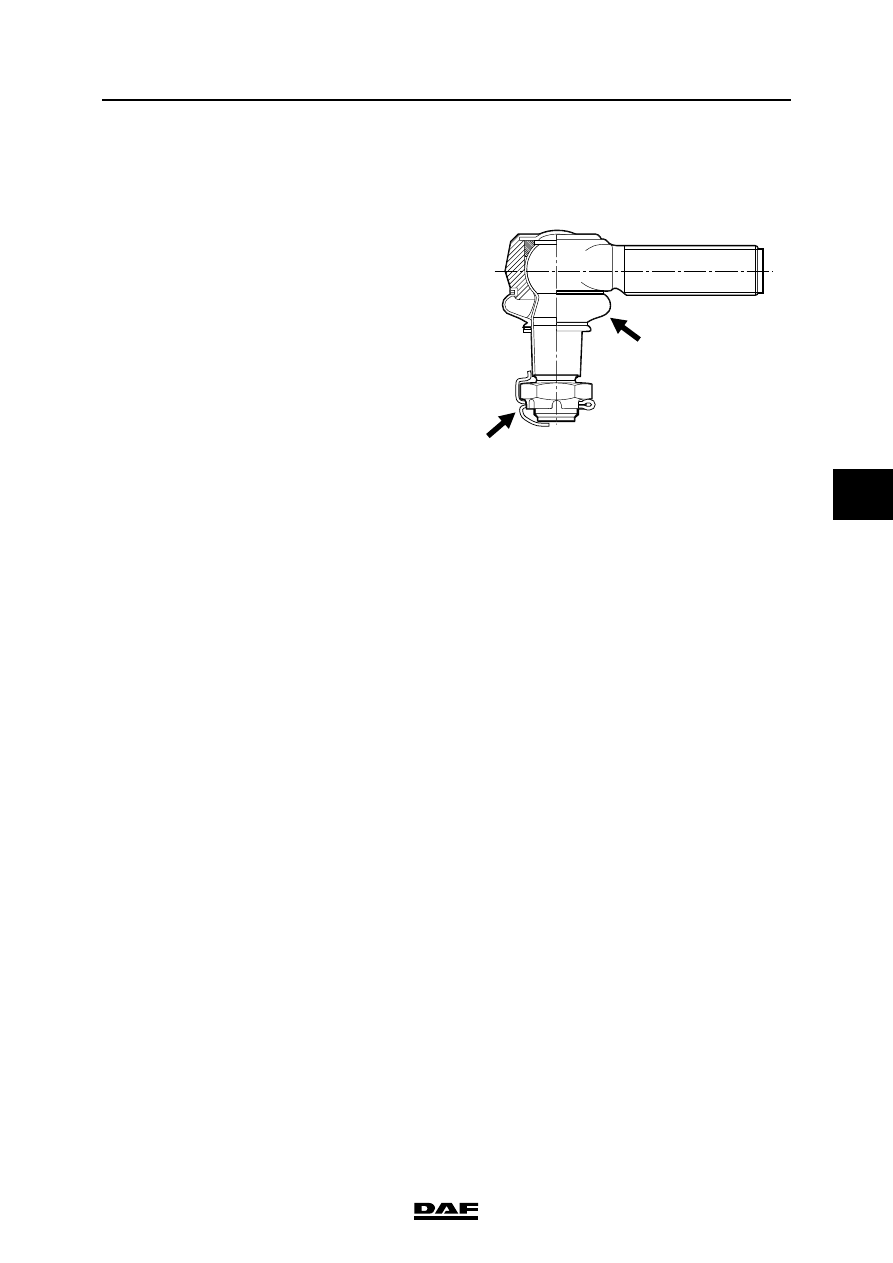Content .. 1155 1156 1157 1158 ..
DAF CF65, CF75, CF85 Series . Manual - part 1157

©
200423
3-11
Inspection and adjustment
EXPLANATORY NOTES ON THE MAINTENANCE ACTIVITIES
ΧΦ75 series
5
3.17 CHECKING THE STEERING BALL JOINT SLEEVE FOR DAMAGE
Inspection, locking devices and dust cover
1.
Check that the steering ball joint dust cover
or seal is not damaged. Replace the steering
ball joint if damaged.
2.
If a castle nut is fitted, check that the locking
devices are present and undamaged.
S7 00 592